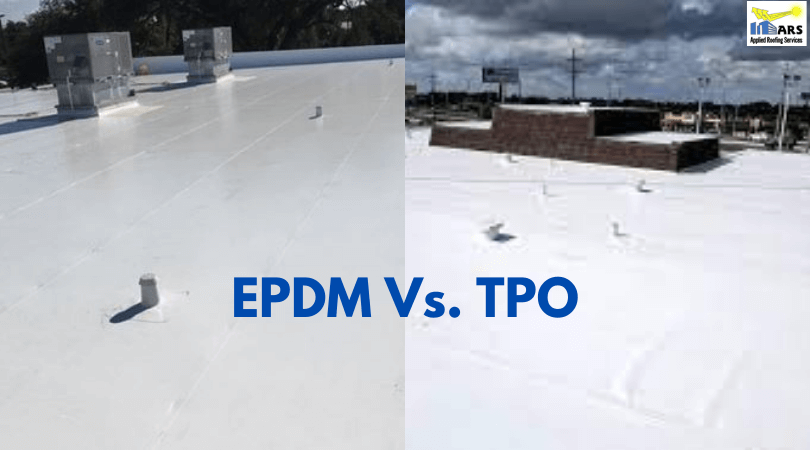


Single-ply membrane roofing systems, mostly used in commercial buildings, have two main types of roofing membranes, namely, TPO and EPDM. While both can be installed on the rooftop, there are slight differences to consider. Read on to learn more about the difference between TPO and EPDM roofing membranes and their benefits.
Thermoplastic Polyolefin (TPO) roofing systems are made of a single synthetic layer and reinforcing scrim that can be used to cover flat roofs. TPO membranes are manufactured in 10, 12, or 20 feet wide sheets that can be rolled up and taken to your facility. They have a natural reflective surface to reflect UV rays.
Water damage is a sign of a leaky roof, which is usually caused by separated seams that allow water to enter your insulation. However, if your roof saturation level is under 25% and your remaining seams are in good condition, you can install a silicone restoration system to restore your TPO roof. A primer will not be needed on a TPO roof that is over five years old because an oily film (found on new TPO) will have worn away. If the oily film is still present, it will prevent the silicone from adhering to TPO properly. If your roof saturation is above 25%, remove the TPO and insulation and install a new roofing system.
It is a durable and affordable synthetic rubber roofing membrane designed for low-slope, flat roofs. It is available in black and white colors, with varying widths and thicknesses.
Like TPO, the roof leak is mostly caused by separated seams, and you can restore your EPDM roof with a silicone restoration system. However, the only difference is that you should use a primer first. An EPDM roof has a black film that does not go away on its own, so a primer is needed to help the silicone adhere properly. The primer can be sprayed on, and power washed off in 15 minutes.
An EPDM roof:
A TPO roof:
EPDM is a little cheaper than TPO while being durable and weather-resistant. TPO is slightly expensive but has advantages including puncture resistance, stronger seams, and more. Choosing one among the two depends on your specific requirements, budget, and location. It is good to hire a commercial roofing company, as they can review your building’s requirements and condition and suggest the best option accordingly. Looking for the best commercial roofing company in California for EPDM and TPO roofing services? Contact Applied Roofing Services today at 714-632-8418 to get comprehensive commercial roofing solutions or get a quote online.
1. How to Keep Your Commercial Building’s Roof Cool in the Summer 2. Single-Ply Roofing Systems for Commercial Buildings 3. All You Need to Know about Asphalt Emulsion Roof Coating Systems